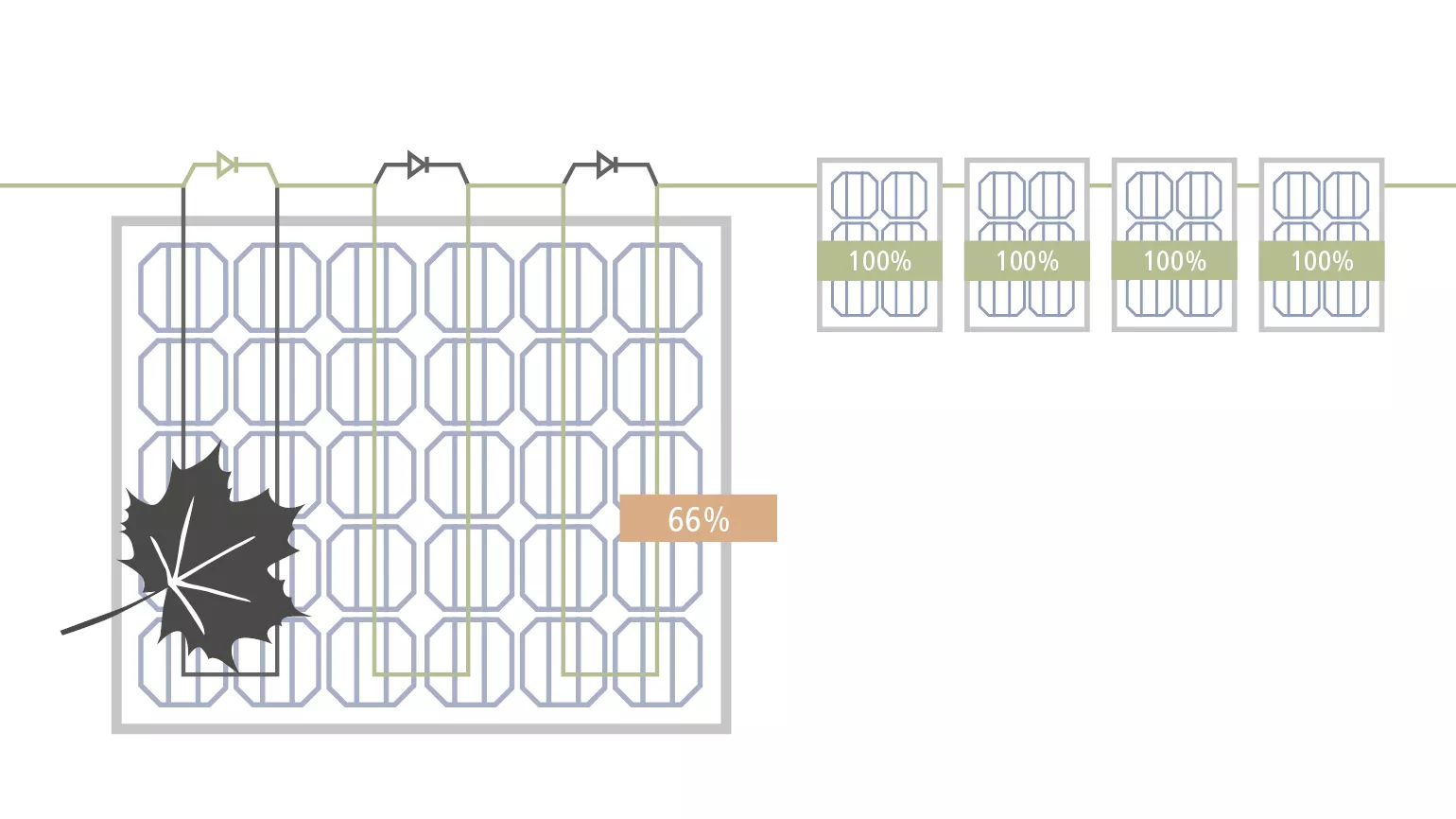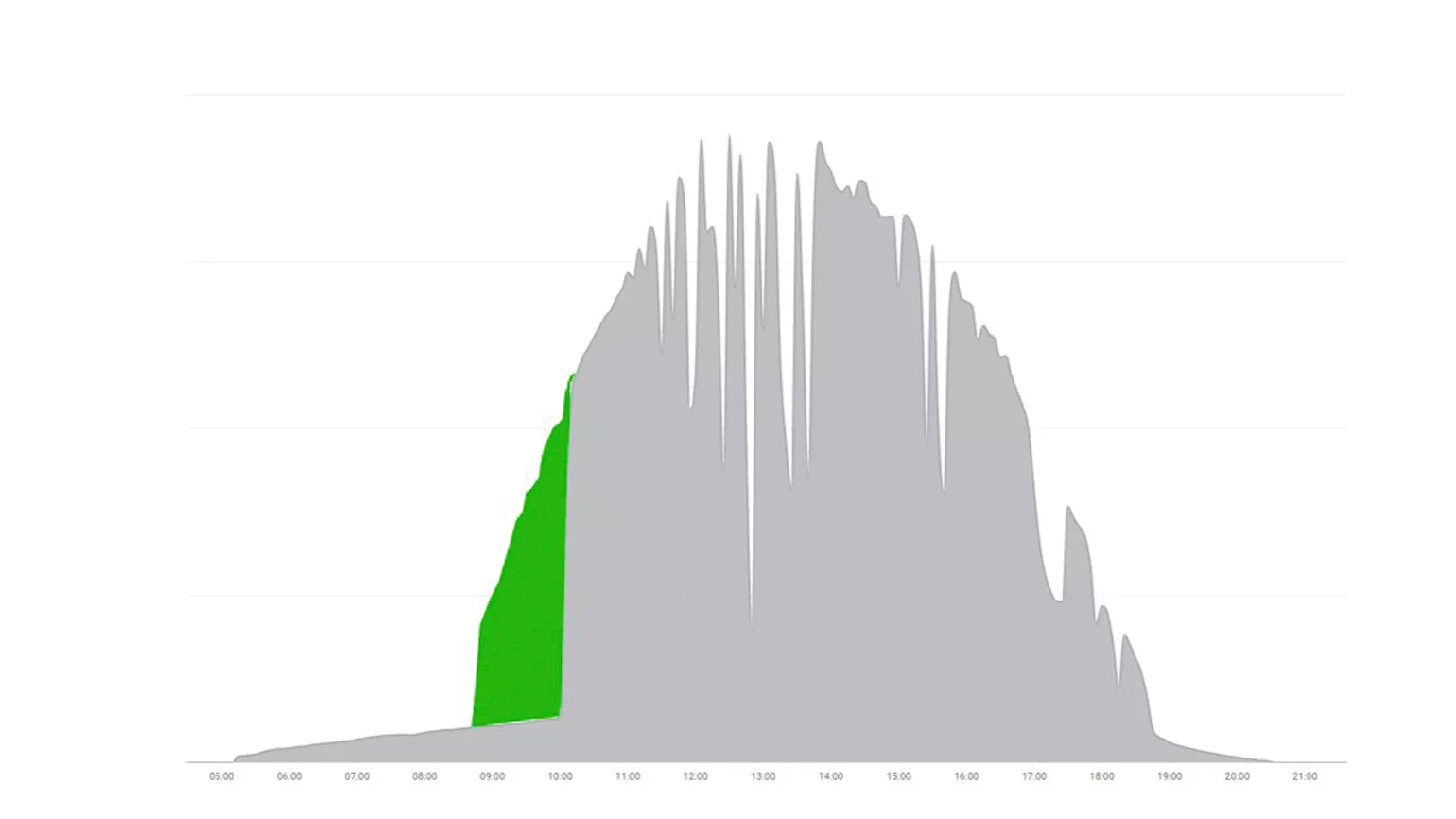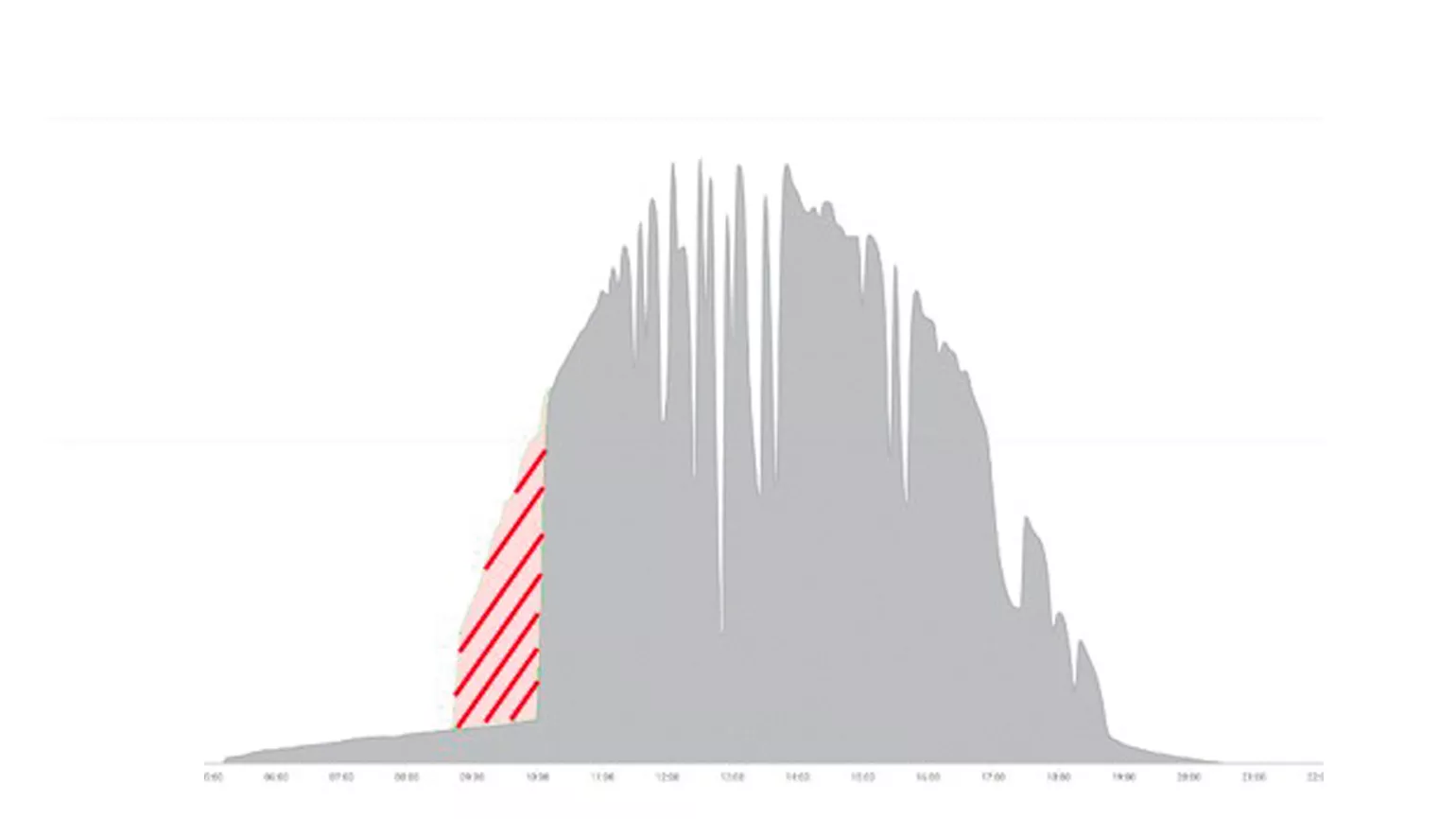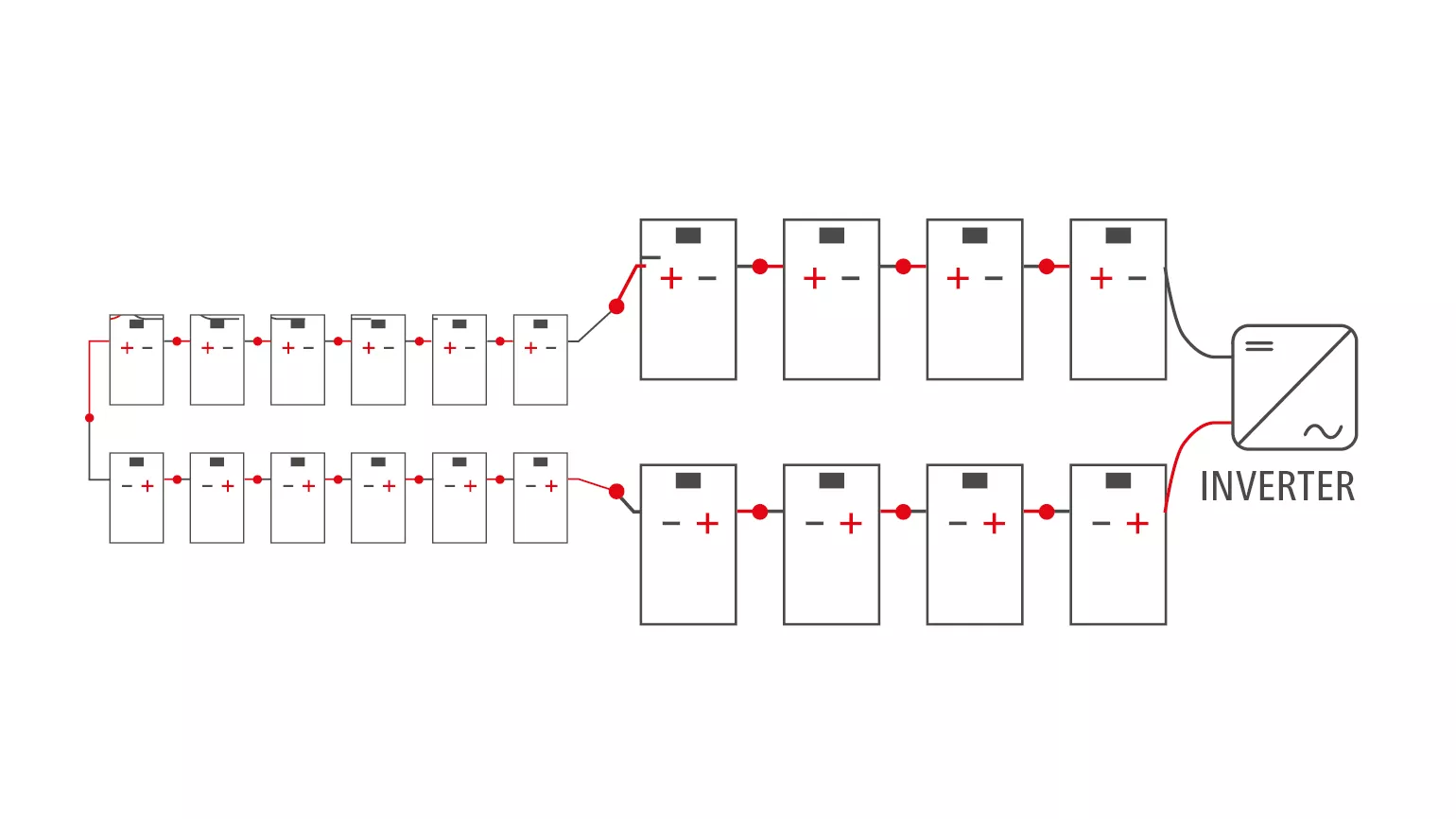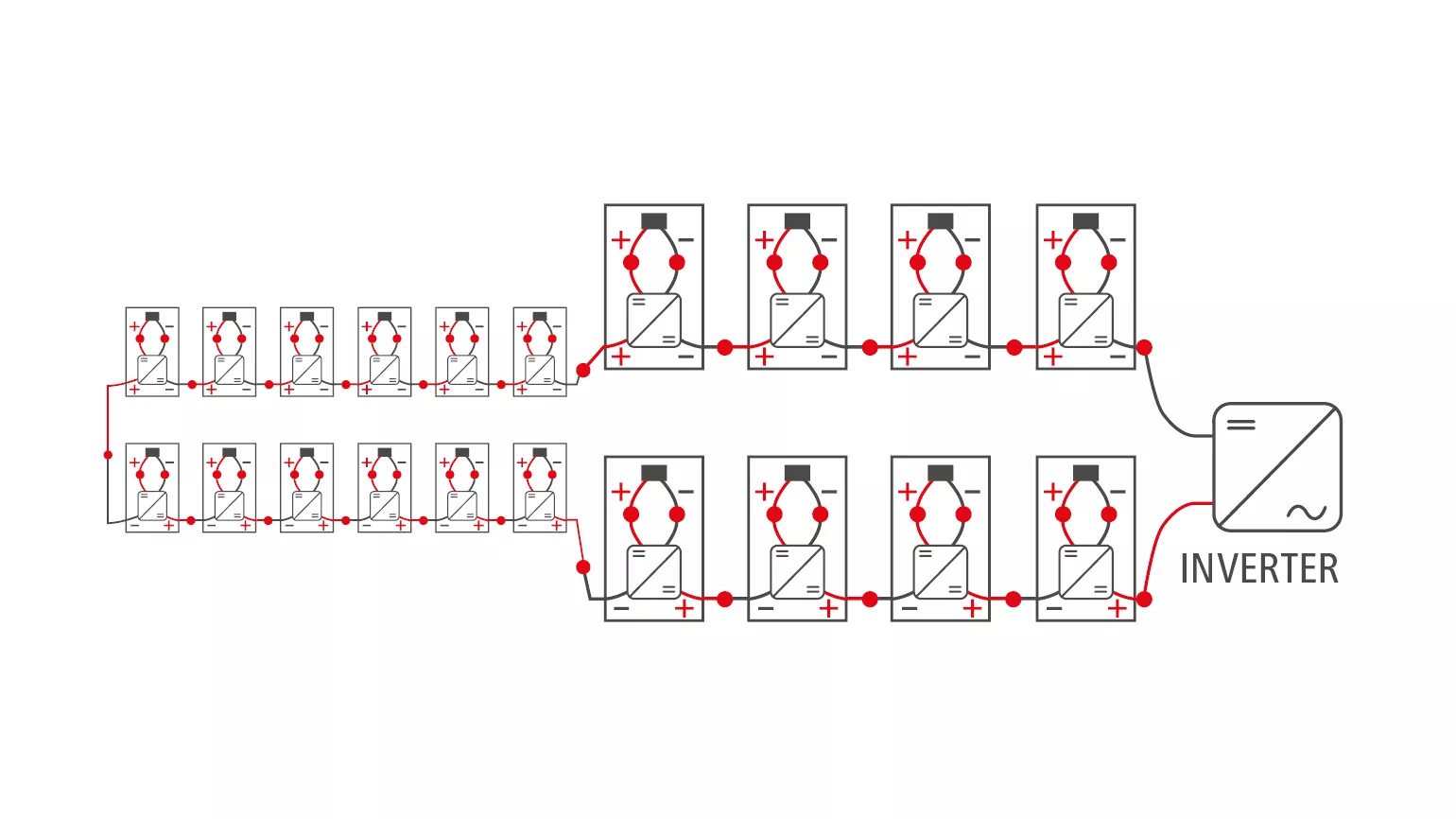Dynamic Peak Manager
profitable PV systems despite shading

Lower losses in the case of partial shading of PV systems
Intelligent shade management
A photovoltaic system should
be as unshaded as possible all
year round to deliver high yields. This can be taken into account when the
system is planned.
However, the environment may change over time, resulting in partial shading of the PV modules.
New buildings or construction elements such as chimneys, dormer windows, power
cables or growing trees could be responsible for this.
This kind of shading has
a negative impact on the yield of a photovoltaic
system and should not be underestimated.
The solution is intelligent shade management,
which is integrated into the inverter and can reduce yield losses to a minimum.
Dynamic Peak Manager – intelligent shade management
The Dynamic Peak Manager is a shade management solution that is integrated into the inverter and maximises the yield of a photovoltaic system despite shading – and all without installing additional components.
With Fronius Dynamic Peak Manager, you can always bring out the best for your customers – even when there is partial shading. This highly efficient MPP tracking algorithm detects any shade and optimises the yield at the string level. Not only does this cost less because there are fewer system components, it also keeps installation and service costs to a minimum.
How the Dynamic Peak Manager works
The Dynamic Peak Manager is a highly efficient shade-tolerant algorithm, which analyses the entire P-U characteristic curve at regular intervals.
This means that the Dynamic Peak Manager always finds the global Maximum Power Point (GMPP).
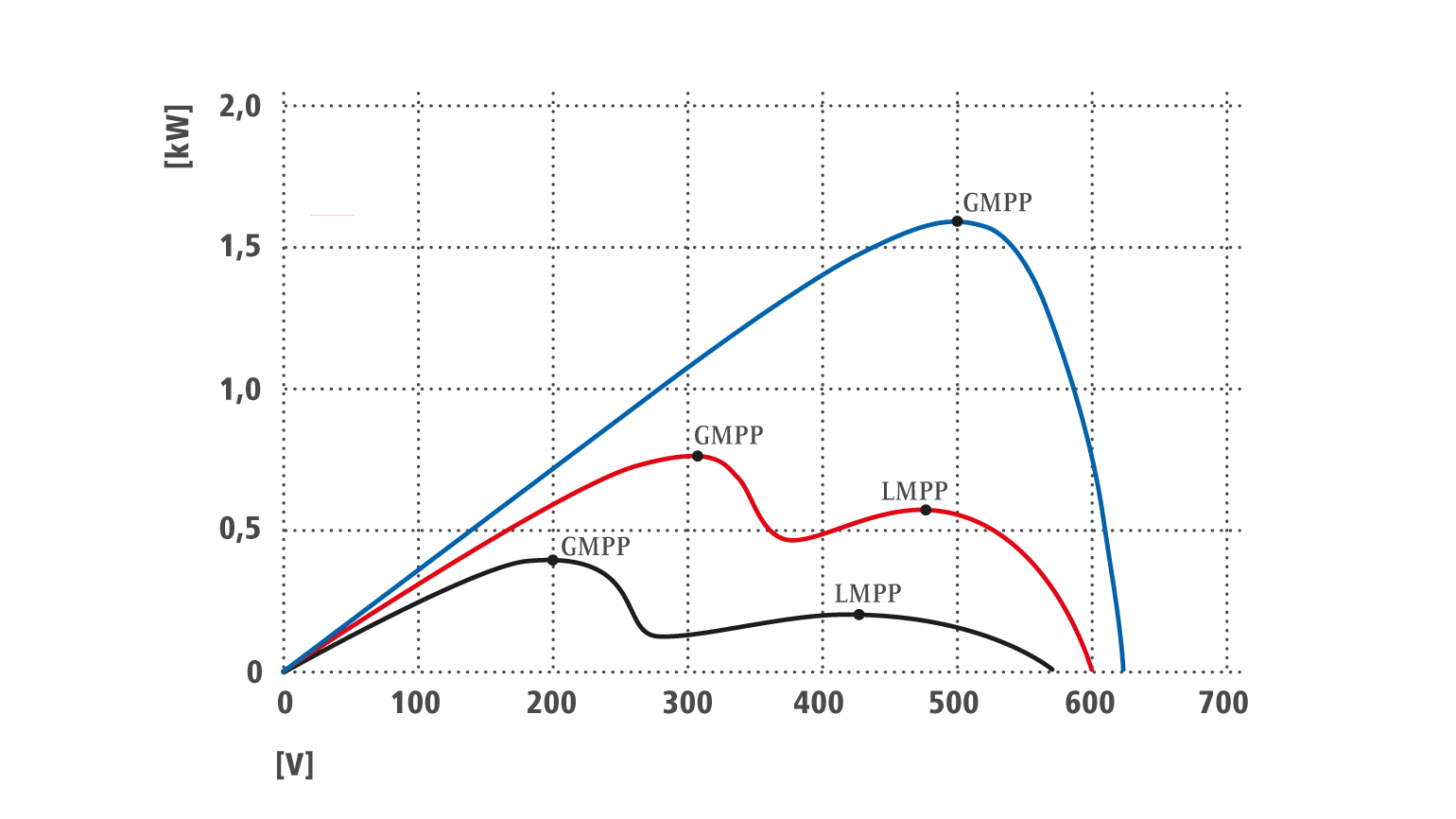
Higher yield despite shading of PV systems in practice
- Photovoltaic system size: 3.3 kWp
- Orientation: South-west
- Tilt angle: 19.5°
- Shadow: Partially shaded
On a sunny day, the yield of this system complete with the Fronius Dynamic Peak Manager is 7% higher than it is for systems without shade management.
Power optimisers in the case of shading of PV systems
DC power optimisers adjust the voltage of shaded PV modules by boosting or decreasing it. The component requires energy to do this.
The more shade there is, the higher the consumption of the optimiser, and the lower the efficiency. This means, especially in partial shading situations, that power optimisers often cannot compensate for the shade, so they do not generate a higher yield.
Another disadvantage of DC-optimised systems is the large number of components on the roof.
Each power optimiser sits directly behind the PV module on the roof and is therefore continuously exposed to heat, cold, rain and snow. This is bad for the sensitive power electronics and can have repercussions for servicing and the fire risk.
The number of defects in DC plug connections, which represent the main source of photovoltaic system problems, is tripled in DC-optimised systems.
Conclusion:
Using DC power optimisers provides no added economic value. Instead, the risk of system failure increases, which results in additional costs due to greater service requirements.
Bypass diodes prevent losses in the case of PV shading
Over the years, the false belief that a shaded PV module also limits the power of all other PV modules in the same string has become established in many peoples’ minds.
But the cells in PV modules are usually combined with three so-called bypass diodes. If the PV module is in shadow, the diode becomes conductive and the affected part of the module is bypassed. The other PV modules, however, continue to perform at full power.
This ensures that a shaded PV module does not affect the power of the other PV modules in the same string.
